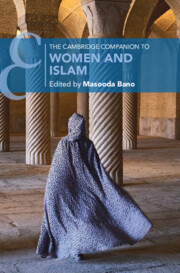Book contents
- The Cambridge Companion to Women and Islam
- Cambridge Companions to Religion
- The Cambridge Companion to Women and Islam
- Copyright page
- Contents
- Contributors
- Preface
- A Note on Foreign-Language Words
- Introduction
- Part I Logic of Classical Reasoning
- Part II Asserting Agency in Faith
- 6 Becoming Salafi
- 7 Joining Political Islam
- 8 Conversions to Islam
- 9 Islamic Feminists’ Approaches
- 10 Women’s Mosques in China
- Part III Asserting Agency in Socio-Political Life
- Volume Bibliography
- Index
- Cambridge Companions To … (continued from page ii)
- References
10 - Women’s Mosques in China
from Part II - Asserting Agency in Faith
Published online by Cambridge University Press: 12 April 2025
- The Cambridge Companion to Women and Islam
- Cambridge Companions to Religion
- The Cambridge Companion to Women and Islam
- Copyright page
- Contents
- Contributors
- Preface
- A Note on Foreign-Language Words
- Introduction
- Part I Logic of Classical Reasoning
- Part II Asserting Agency in Faith
- 6 Becoming Salafi
- 7 Joining Political Islam
- 8 Conversions to Islam
- 9 Islamic Feminists’ Approaches
- 10 Women’s Mosques in China
- Part III Asserting Agency in Socio-Political Life
- Volume Bibliography
- Index
- Cambridge Companions To … (continued from page ii)
- References
Summary
Maria Jaschok analyzes the opportunities and challenges faced by Muslim women living as a minority, particularly in contexts where religion is under pressure. The chapter highlights the dynamism exhibited by female imams (ahongs) in China, who have strategically leveraged the pressure on male authority imposed by the Chinese state to carve out a larger role for themselves. The chapter also shows how these women seek to connect with the global Muslim community, or ummah, while relating Islam to their everyday realities.
- Type
- Chapter
- Information
- The Cambridge Companion to Women and Islam , pp. 234 - 258Publisher: Cambridge University PressPrint publication year: 2025

